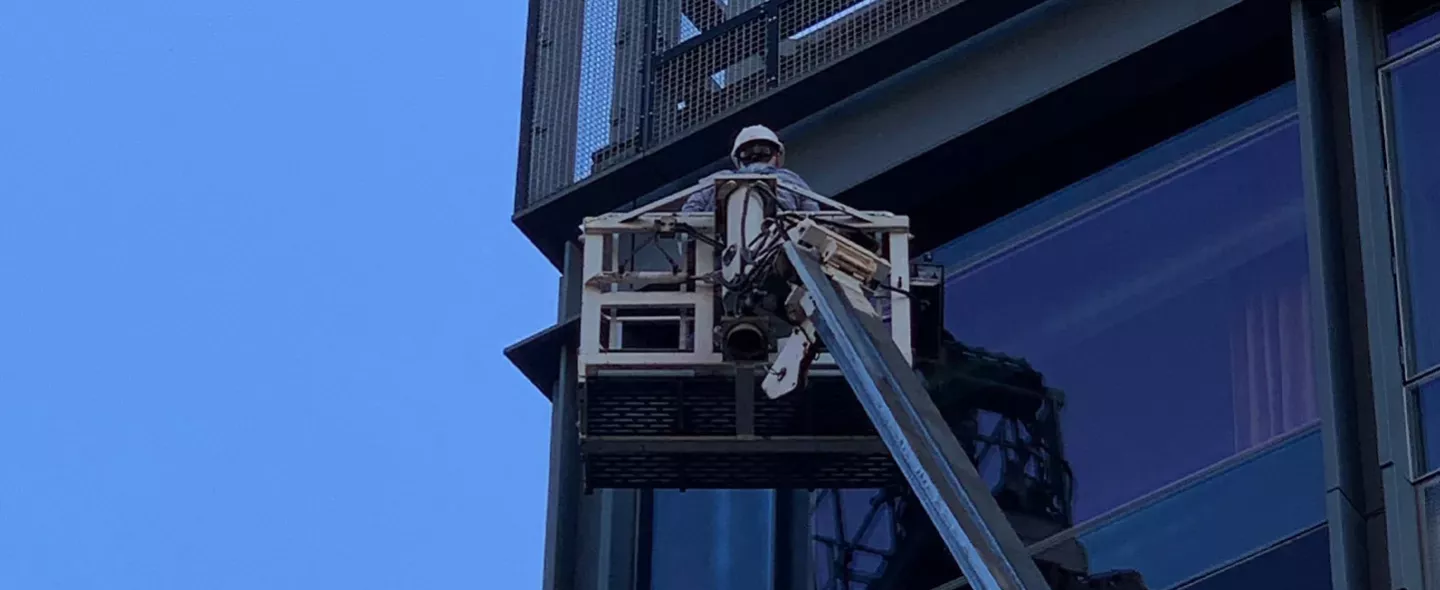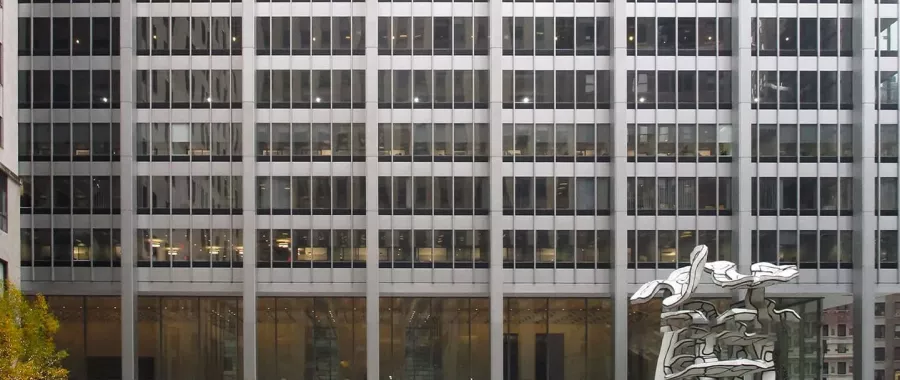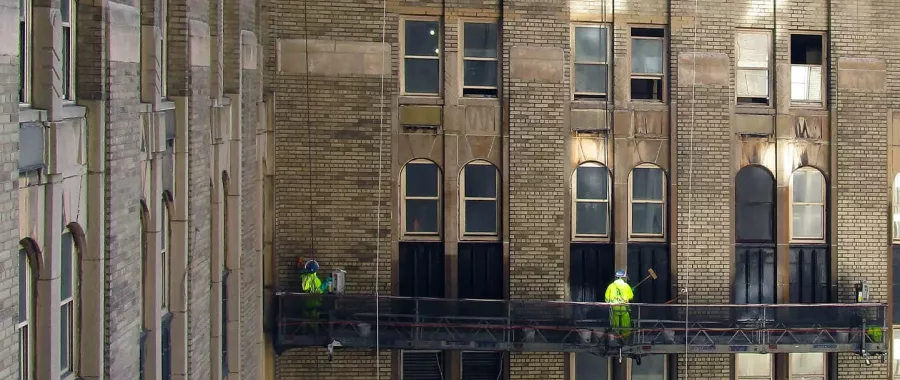Facade Inspection & Safety Program (FISP)
New York City’s ‘Facade Inspection Safety Program’, or FISP, is the required periodic facade inspection of all buildings in New York that are more than six stories above grade. FISP applies to all buildings in the five boroughs regardless of square footage or usage.
Overview:
FISP requires all buildings over 6 stories to undergo a periodic inspection where a licensed professional engineer or registered architect performs a visual and physical examination of the building envelope or facade. The visual examination includes a visual inspection of all exterior walls and appurtenances; appurtenances include, but are not limited to, exterior fixtures, flagpoles, signs, parapets, railings, copings, guard rails, window frames (including hardware and lights), balcony enclosures, window guards, window air conditioners, flower boxes and any equipment attached to or protruding from the facade. The physical examination includes an up-close, hands-on inspection of each facade that fronts a public right-of-way in increments of 60’, from roof to grade level.
History:
The history of FISP dates back to 1979 when a Barnard student, Grace Gold, was killed when a piece of terra cotta masonry fell from the facade of an Upper West Side building. As a result of this tragedy, Local Law 10 of 1980 was enacted, which required inspections of buildings’ street-facing facades for buildings over six stories; the hands-on requirement was not yet enforced. Following several more tragedies over the years due to structurally unsound building facades and appurtenances, Local Law 11 of 1998 was enacted, introducing new amendments and further increasing the inspection requirements. In 2010 during the 7th Cycle, the inspection program was officially renamed to FISP, and the Railing & Balcony inspection amendment was implemented which mandated the inspection of balconies, fire escapes, and guardrails for code compliance and stability. During the most recent cycle, Cycle 9, the physical inspection frequency was increased to every 60’ along a public right-of-way, and probes were added as a requirement for cavity wall construction, to determine the condition and spacing of wall ties.
FISP Classifications:
The observation and classification of building conditions during the FISP inspection determines how the building will be categorized, as ‘Safe’, ‘SWARMP’, or ‘Unsafe’:
Safe: Conditions that do not require any repair or maintenance during the next five-year period, or until the next FISP cycle.
SWARMP: Conditions that have the potential to become unsafe but do not require immediate action. SWARMP repairs must be performed in the time frame recommended in the FISP report and must be addressed within five years, prior to the next FISP cycle.
Unsafe: Conditions that are hazardous to the public’s safety and require immediate repair following the critical examination. Unsafe conditions must be corrected within 90 days of the submission of the critical report. If repairs cannot be performed due to the need to develop repair documents, obtain competitive proposals and/or file and obtain any required permits, extensions of time may be granted by the DOB.
FISP Sub-Cycles:
The buildings subject to FISP in New York are grouped into three Cycles: A, B, and C. A building’s filing window is determined by its Sub-Cycle, which is based on the last digit of the building’s block number. The three Sub-Cycles are as follows:
Cycle 10
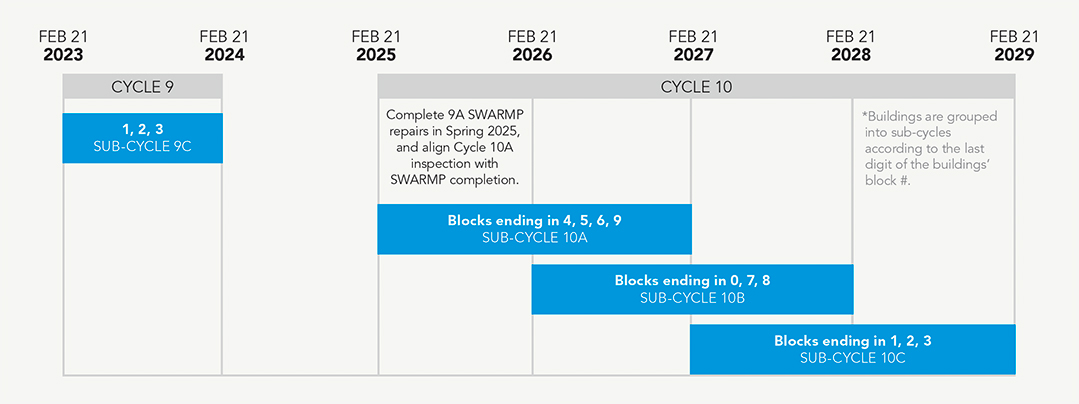

Talk to our experts
FISP Performance
Hiring the Right Team:
It is required and imperative that a building’s inspection be performed under the direction of a QEWI. SOCOTEC has specialized in building envelope technology for more than a quarter century, with over twenty licensed Professional Engineers and Registered Architects in the New York office, as well as a certified QEWI that oversees all facade inspection projects.
SOCOTEC has performed over three hundred FISP inspection services on behalf of property owners and managers. The most respected names in real estate rely upon our team’s expert judgment calls, and our advice and relationships are, and have always been, focused on the long term. We also offer DOB expediting services, and have on staff the former commissioner of the DOB who heads of our Code Advisory team.
Our team can both administer the FISP inspection and provide long-term solutions. If a building is determined as ‘SWARMP’ or ‘Unsafe’ it may suggest an underlying issue that could be costly. As an experienced building envelope consultancy, among other areas (sustainability, energy efficiency, code advisory and construction advisory), we are able to provide a holistic strategy and a proposed budget for those potential issues.
Industrial Rope Access:
SOCOTEC provides Industrial Rope Access SPRAT-certified inspectors in addition to our seasoned Project Managers. FISP inspections by rope access are becoming increasingly more efficient and economical, especially as the FISP amendments become more stringent and require more hands-on examinations. Inspections via rope access are equally as thorough, but are often performed faster than by other methods of inspection, and in effect become a more cost-effective alternative.
Three Reasons FISP is Important for Existing Buildings:
Safety. FISP was created due to the need for an increased focus on public safety in New York City. As one of the most densely populated cities in the world with some of the tallest skyscrapers and number of buildings, we experience tragedy every few years due to falling material and structurally unsound building facades. FISP helps mitigate these events.
It's the Law. Owners of buildings greater than six stories must submit reports every five-year cycle, and they have a two-year window to file according to their Sub-Cycle assignment. If SWARMP items are identified, Owners are required by law to address those repairs before the next filing cycle.
Opportunity. Although costlier, the cost-benefit of a deep retrofit is undeniable. The facade can be replaced and enhanced, mechanical systems can be upgraded, and higher energy efficiency can be considered. SOCOTEC can also provide evaluations for compliance with meeting the new carbon emissions requirements, per Intro. 1253-C/Local Law 97.
New Amendments:
There are important updates to be aware of in Cycle 10:
The minimum number of physical examinations will now be based on the linear footage of facade along the public right-of-way.
Probes will be required for buildings with cavity wall construction in order to verify spacing and integrity of wall ties (Only required for odd-numbered FISP cycles).
Increased level of qualification and experience required of the QEWI.
Increased penalties for violations and non-compliance.
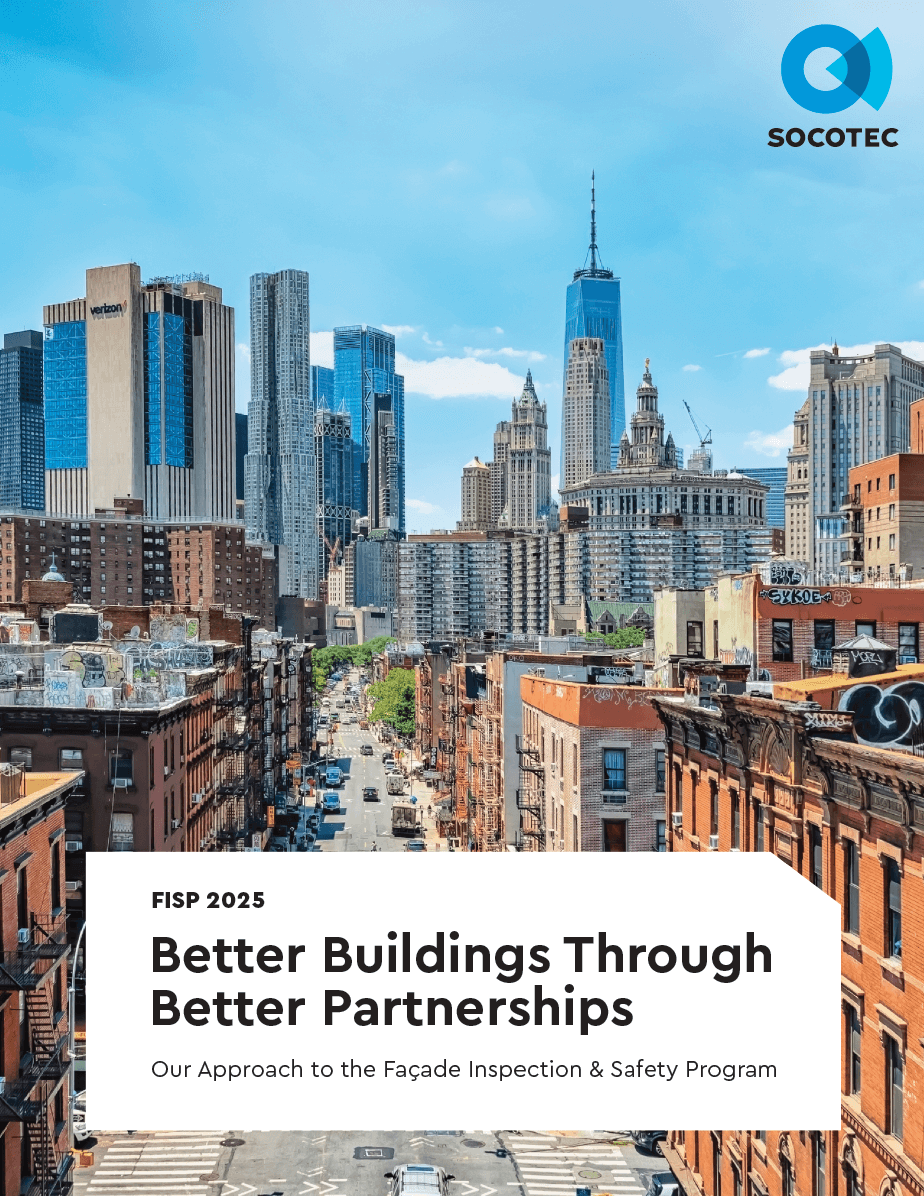
FISP Calender / Sub-Cycles / Penalty Information
Want to know more bout our Facade Inspection Safety Program (FISP) services?


